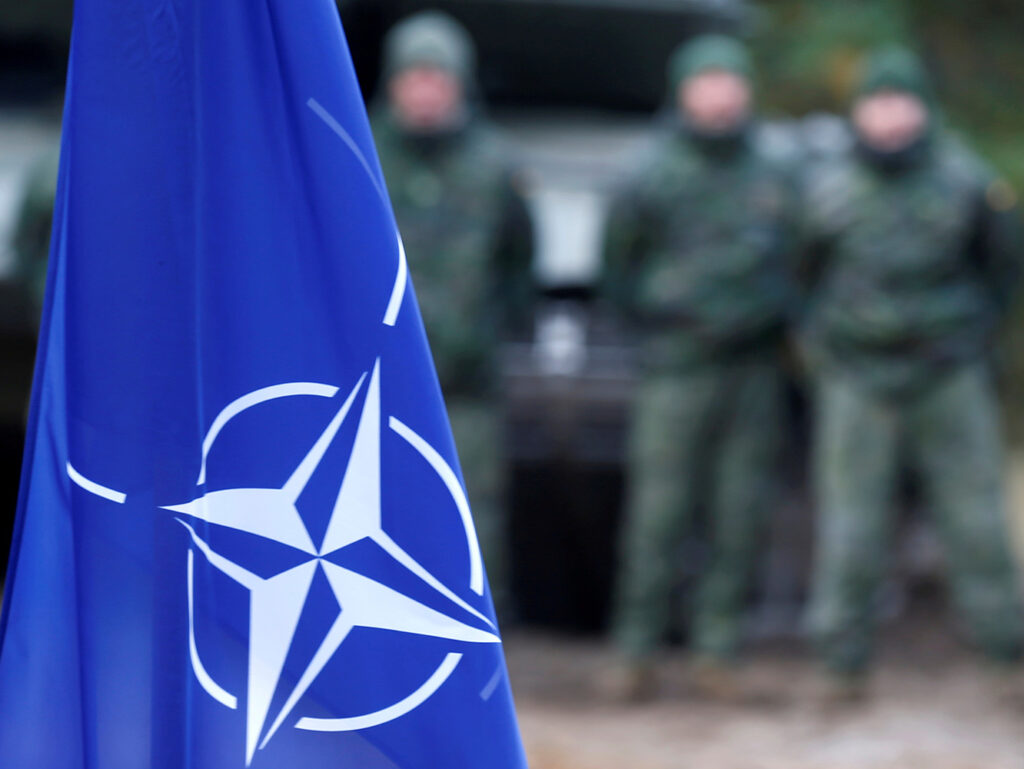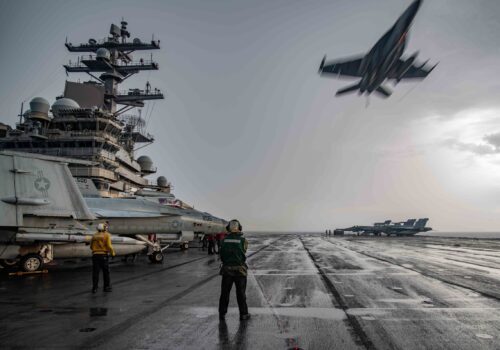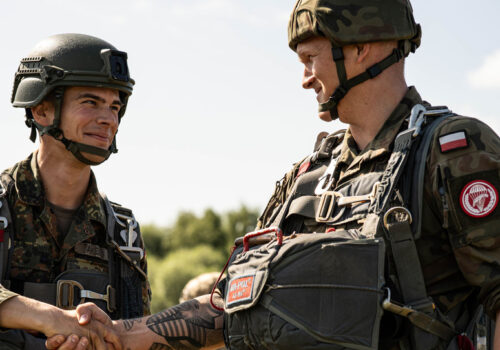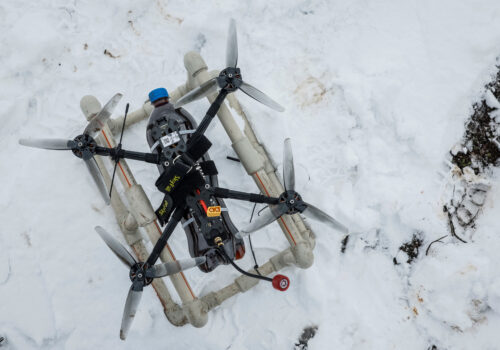It’s (still) more expensive to rotate military forces overseas than base them there
In mid-2020, then-President Donald Trump ordered the Pentagon to withdraw roughly one-third of US forces from Germany, reportedly because of policy differences with Berlin. Given how long it would take to implement such a significant change in overseas posture, the clock ran out on his term before the Department of Defense could complete it. With Trump’s return to the White House, it’s possible he may again order DOD to dramatically reduce forward stationing of forces in Europe, but far earlier in his term.
Assuming the United States maintains some kind of troop presence in Europe—admittedly an open question given uncertainties surrounding the new administration’s approach to European security—relying primarily on rotational presence doesn’t make sense fiscally. Rotating US military forces overseas for continuous nine-month deployments costs more than forward stationing them in allied countries such as Germany or Poland. This may seem counterintuitive, but recent US Army data indicate that recurring annual costs of back-to-back nine-month deployments outweigh those associated with basing units in Europe on a full-time basis.
This is the same conclusion I reached seven years ago, just after the United States began rotating armored brigade combat teams (ABCTs) to Europe, in the wake of Russia’s first invasion of Ukraine in 2014. That conclusion was the result of a ten-month study I conducted for the US Army assessing the costs—not only fiscal but also in terms of training readiness, family and soldier morale, and diplomacy—of rotational deployments versus forward stationing. This latest reexamination appears to validate the 2017 findings that forward-stationed forces are less expensive.
Rationales and cost-benefit analysis
Over the course of twenty-five years, the US military reduced its forward-stationed presence in Europe steadily beginning in 1991. By 2013, the US Army had sent the last of its tanks from Europe back to the continental United States (or CONUS), and the overall number of Army personnel based in Europe had dropped from 213,000 to 30,000. The drawdown was largely driven by fiscal cost—with many assuming that rotating forces from the United States was less expensive than basing them in Europe—and dramatic changes in the security threat environment following the Soviet Union’s collapse.
Other rationales suggested by those who favored a US-based military included the argument that forces were more quickly and easily deployed from America. In fact, deployment to the Middle East, for example, by air and ship is several days faster from Bremerhaven, Germany, than from the port at Beaumont, Texas, which is typically used by ABCTs deploying from Ft. Cavazos, Texas. Additionally, even the sometimes vociferous disagreement among allied governments failed to inhibit Europe-based American units from deploying to both Iraq and Afghanistan repeatedly over the last two decades.
Proponents of rotational deployments also argued that US military forces greatly benefit from having to pack up all their equipment, get to an American port, ship it across an ocean, receive it overseas, and move onward in an unfamiliar country. My research indicates there are indeed significant training benefits gained in this way. Moreover, brigade commanders I’ve spoken with note that because their rotationally deployed forces were away from families, the pace of training activities was significantly higher compared to training at their stateside base, allowing those units to achieve a very high level of training readiness.
However, those same conversations revealed readiness shortcomings associated with rotational deployments in comparison to forward stationing. For starters, no US-based unit rotates overseas at full strength, limiting the training benefits gained in movement to and while on the ground in Europe. Moreover, most of the troops in rotationally deployed units typically have not had prior experience operating in Europe, leading to a steep learning curve—including more traffic accidents—for many. More broadly, just as rotationally deployed US troops in Europe learn the rules of the road (literally) and gain an understanding of their operating environment, their nine-month rotation ends, and they redeploy home, with most of the knowledge gained and the networks developed lost.
Finally, advocates of a largely US-based force argued cutting overseas stationing would strengthen family and troop morale by reducing the number of moves—known within the military as permanent changes of station (PCSs)—in a soldier’s career. However, the reality of rotational deployments is that, when training and other preparatory activities are also considered, soldiers are away from home for eleven to twelve months without combat pay, tax-free pay, or the opportunity to earn a combat patch—things that help make those months away from home working twelve- to fifteen-hour days, six or seven days per week, tolerable.
Negative toll of high deployment tempo
More recently, other indicators point to the negative toll that a high deployment tempo is having on ABCTs. Earlier this year, an Army Times report revealed a strikingly higher rate of suicides among troops in ABCTs, compared to troops in other kinds of units. The report tied these higher rates to the exceptionally high operational tempo (OPTEMPO) of ABCTs and the numerous deployments—to Europe and elsewhere—they have maintained over the last decade. In my discussions with brigade commanders, some cited additional challenges such as increased domestic violence and increased divorce rates in the months following redeployment from overseas rotations.
It’s unclear whether reducing the number of back-to-back rotational deployments while increasing the number of forward-stationed troops in places like Germany or Poland would lower the incidence of divorce or suicide among troops in tank brigades—though given the human toll of those incidents, experimenting with ways to ease the burden on servicemembers and their families is worthwhile—but it would undoubtedly cost the US taxpayer less. Based on data from the last several fiscal years, it appears the annual recurring costs of a continuous, rotational ABCT presence in Europe are nearly $70 million more per year than the annual recurring costs of a forward-stationed ABCT in Germany or Poland. The chart below lays out the data as well as their sources. Key assumptions are:
- An ABCT consists of roughly 4,200 troops and has an average of 1,658 school-age dependents.
- Each ABCT rotating to Europe takes its equipment back and forth across the ocean on each rotation.
- ABCTs rotating to Europe do so on a continuous basis—a so-called heel-to-toe arrangement—and over the course of three years, four nine-month rotations occur, with a couple of weeks’ overlap between some elements of each arriving and departing unit.
- Each ABCT preparing for overseas rotation conducts roughly four months of predeployment activities.
- The operations and sustainment costs associated with the forward-stationed unit below are probably overstated given they include the maximum overseas housing allowance (OHA) permitted per soldier, not actual reimbursed amounts. Total housing allowance (in military parlance, both OHA and the basic allowance for housing, or BAH) accounts for 13 percent of the total ops and sustainment costs of an ABCT forward stationed in Germany.
- The notional rotationally deployed ABCT used in the chart below is based at Ft. Cavazos, Texas, while the notional forward-stationed ABCT used in the table below is based at Vilseck, Germany.
- The chart below does not capture “costs” borne by sister brigades at a rotationally deployed ABCT’s home station. For example, the sister brigades or other units back at home station must cover the gaps left in base support, security tasks, and maintaining the deployed unit’s facilities. This affects the sister brigades’ training and readiness both in terms of fiscal and opportunity costs.
Costs of rotational deployment vs. forward stationing an armored brigade combat team (ABCT)
Infrastructure and cost sharing
What’s not mentioned in the spreadsheet above of course is the infrastructure—in the United States and in Europe—necessary to support an ABCT. These onetime costs can be significant, but depending on the arrangement made with the host nation, cost sharing is possible, often on terms very favorable to the United States. For example, the Polish government has borne nearly all costs associated with building facilities in Zagan, Poland, hoping to host an American ABCT. The cost of this investment is roughly $3.6 billion, all of which is paid by Poland. Moreover, the Poles even agreed to handle much of the annual sustainment costs, including fuel, electricity, water, and natural gas, further widening the annual recurring cost difference between rotating an ABCT to Zagan and forward stationing it.
If forward stationing an ABCT in Germany or Poland versus rotationally deploying one to Europe every nine months would be cheaper for the American taxpayer, reduce the operational/deployment tempo of worn-out armored units across the Army, and send stronger signals of deterrence toward Russia and reassurance for our allies, why isn’t the United States pursuing it more aggressively? That remains unclear, but politics is probably partially to blame. In an era when the size of the US Army remains flat or is actually shrinking, forward stationing an ABCT in Europe means transferring an existing one from somewhere in the United States, not building a new one overseas. Politicians are loathe to see their district or state lose a military unit and the jobs and economic development that usually accompany it.
Nonetheless, if favorable deals can be negotiated on onetime infrastructure costs, the time may be ripe to reconsider reliance on rotational deployments. Cost data from the last several years certainly would support reduced reliance on rotations.
About the author
Related content

The Transatlantic Security Initiative, in the Scowcroft Center for Strategy and Security, shapes and influences the debate on the greatest security challenges facing the North Atlantic Alliance and its key partners.
Image: Soldiers with the US Army’s 2nd Cavalry Regiment fire upon the opposing force during Exercise Saber Junction 23 in Hohenfels, Germany. NATO.int



